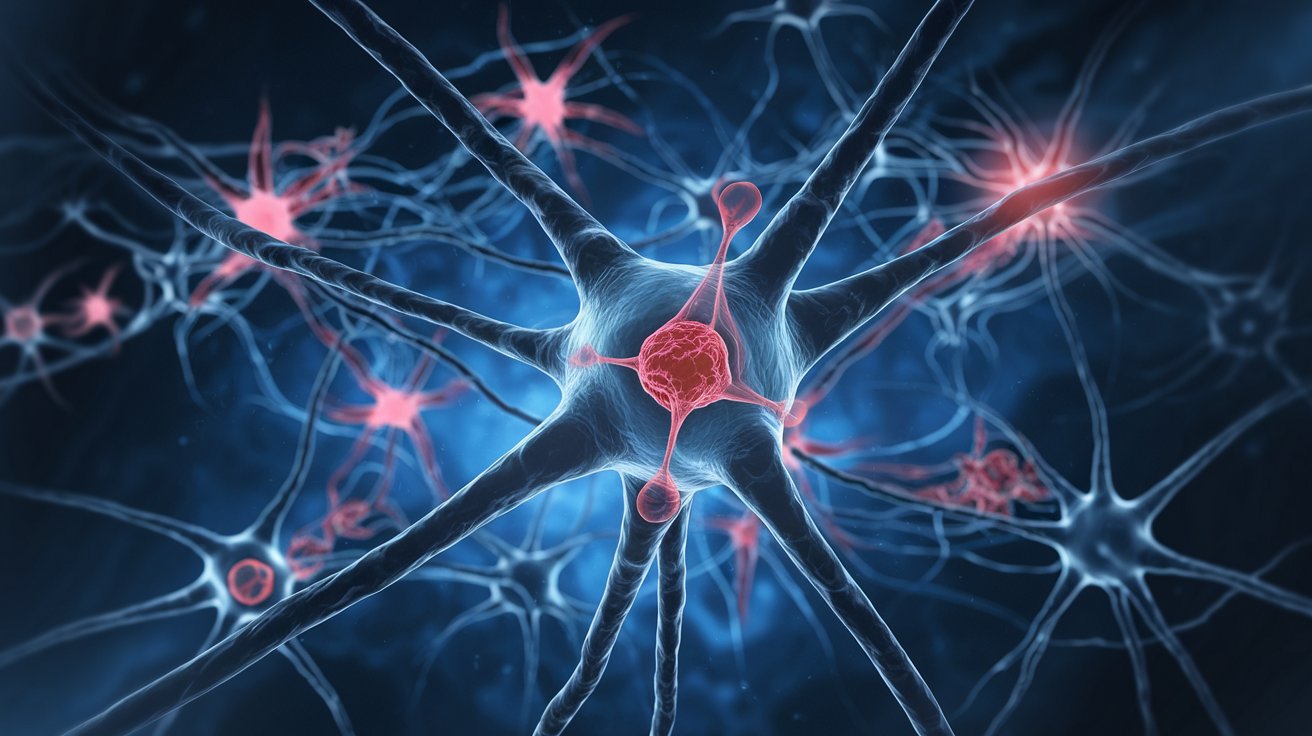
What exactly is NMDA receptor antagonist neurotoxicity (NAN)? This term might sound like a mouthful, but understanding it is crucial for grasping how certain drugs affect the brain. NMDA receptor antagonists are substances that block NMDA receptors in the brain, which play a key role in memory, learning, and neuroplasticity. However, blocking these receptors can sometimes lead to neurotoxicity, causing damage to nerve cells. This can result in various neurological issues, from cognitive impairments to severe brain damage. Knowing the facts about NAN helps in making informed decisions about medications and treatments that involve NMDA receptor antagonists. Let's dive into 25 essential facts that will shed light on this complex topic.
Key Takeaways:
- NMDA receptor antagonists, like ketamine, can harm the brain by disrupting memory, causing emotional disturbances, and even leading to seizures. It's important to use them cautiously and explore safer alternatives.
- Blocking NMDA receptors can lead to excitotoxicity, disrupting calcium levels, and causing oxidative stress. Monitoring dosage, using antioxidants, and seeking early intervention are crucial in preventing neurotoxicity.
What is NMDA Receptor Antagonist Neurotoxicity?
NMDA receptor antagonists are substances that block the activity of NMDA receptors in the brain. These receptors play a crucial role in synaptic plasticity, memory function, and neurodevelopment. However, blocking these receptors can lead to neurotoxicity, which can cause significant damage to the brain. Here are some key facts about NMDA receptor antagonist neurotoxicity (NAN).
-
NMDA receptors are critical for learning and memory. Blocking them can disrupt these processes, leading to cognitive deficits.
-
Ketamine, a well-known anesthetic and recreational drug, is an NMDA receptor antagonist. Its abuse can lead to neurotoxic effects.
-
NMDA receptor antagonists can induce a state called "excitotoxicity," where neurons become overactive and eventually die.
-
Chronic exposure to NMDA receptor antagonists can lead to long-term changes in brain structure and function.
-
NMDA receptor antagonists are sometimes used in research to model neurodegenerative diseases like Alzheimer's.
Mechanisms of NMDA Receptor Antagonist Neurotoxicity
Understanding the mechanisms behind NAN can help in developing strategies to mitigate its effects. Here are some insights into how NMDA receptor antagonists cause neurotoxicity.
-
Blocking NMDA receptors increases the release of glutamate, an excitatory neurotransmitter, which can lead to excitotoxicity.
-
NMDA receptor antagonists can disrupt calcium homeostasis in neurons, leading to cell death.
-
These antagonists can also impair mitochondrial function, reducing the energy supply to neurons and causing cell death.
-
NMDA receptor blockade can lead to oxidative stress, damaging cellular components like DNA, proteins, and lipids.
-
Inflammation is another consequence of NMDA receptor antagonist exposure, contributing to neuronal damage.
Symptoms and Effects of NMDA Receptor Antagonist Neurotoxicity
NAN can manifest in various ways, affecting both cognitive and physical functions. Here are some common symptoms and effects.
-
Cognitive deficits, including memory loss and impaired learning, are common symptoms of NAN.
-
Emotional disturbances, such as anxiety and depression, can also result from NMDA receptor antagonist exposure.
-
Physical symptoms may include motor coordination problems and muscle weakness.
-
In severe cases, NAN can lead to seizures and other neurological disorders.
-
Long-term exposure can result in permanent brain damage and cognitive decline.
NMDA Receptor Antagonists in Medicine
Despite their potential for neurotoxicity, NMDA receptor antagonists have medical applications. Here are some ways they are used in healthcare.
-
Ketamine is used as an anesthetic in both human and veterinary medicine.
-
NMDA receptor antagonists are being explored as treatments for depression, particularly in cases resistant to other medications.
-
Some NMDA receptor antagonists are used to manage chronic pain conditions.
-
These drugs are also being studied for their potential to treat neurodegenerative diseases like Alzheimer's and Parkinson's.
-
In emergency medicine, NMDA receptor antagonists can be used to manage acute brain injuries.
Preventing and Mitigating NMDA Receptor Antagonist Neurotoxicity
Preventing and mitigating the effects of NAN is crucial for both medical and recreational users. Here are some strategies to consider.
-
Limiting the dosage and duration of NMDA receptor antagonist use can reduce the risk of neurotoxicity.
-
Antioxidants and anti-inflammatory agents may help protect neurons from the damaging effects of NMDA receptor antagonists.
-
Monitoring and managing calcium levels in neurons can prevent excitotoxicity.
-
Regular cognitive assessments can help detect early signs of neurotoxicity, allowing for timely intervention.
-
Research into safer alternatives and adjunct therapies continues to be a priority in the medical community.
Final Thoughts on NMDA Receptor Antagonist Neurotoxicity
Understanding NMDA receptor antagonist neurotoxicity is crucial for anyone studying neuroscience or pharmacology. These substances, while valuable in research and medicine, can have serious side effects if not used properly. Neurotoxicity can lead to cognitive deficits, memory loss, and even long-term brain damage. Knowing the risks helps in making informed decisions about their use.
Researchers continue to explore ways to mitigate these effects, aiming for safer therapeutic applications. Staying updated on the latest findings can provide better strategies for minimizing harm. Always consult scientific literature and professionals when dealing with these potent compounds.
By being aware of the potential dangers and advancements in this field, we can better navigate the complexities of NMDA receptor antagonists. This knowledge empowers us to use these tools responsibly, ensuring both progress and safety in scientific endeavors.
Frequently Asked Questions
Was this page helpful?
Our commitment to delivering trustworthy and engaging content is at the heart of what we do. Each fact on our site is contributed by real users like you, bringing a wealth of diverse insights and information. To ensure the highest standards of accuracy and reliability, our dedicated editors meticulously review each submission. This process guarantees that the facts we share are not only fascinating but also credible. Trust in our commitment to quality and authenticity as you explore and learn with us.
